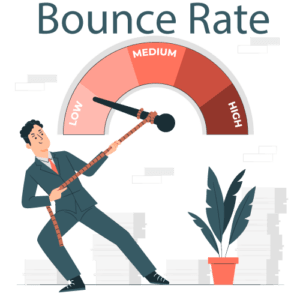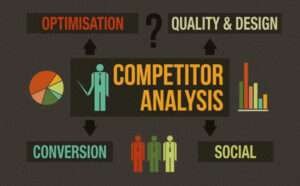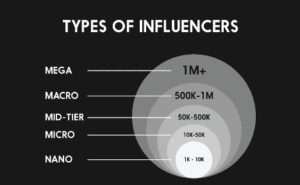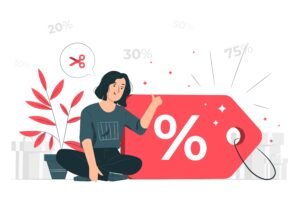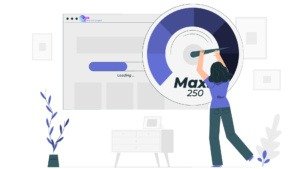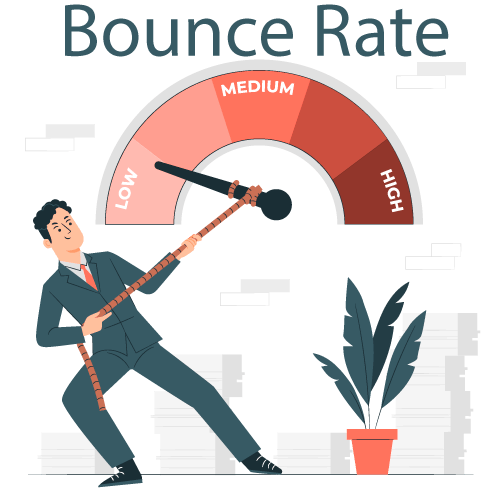
In this SEO training, I will guide you through the intriguing world of bounce rates. We’ll explore the nuances of this metric, understanding when it holds significant SEO relevance and when it’s just a minor player in the grand scheme of website optimization.
As we delve deeper into this topic, we’ll address the often misunderstood concept of bounce rate and its relationship with search engine rankings. Contrary to popular belief, there are instances where bounce rates don’t carry the weight they’re commonly attributed to.
But the real gem of this training lies in the treasure trove of strategies I’m about to unveil. With these eight transformative techniques, you’ll discover how to steer your website’s bounce rate toward the ideal range, and in doing so, you’ll create a more engaging, user-friendly online space. So, fasten your seatbelt and prepare for a deep dive into bounce rates and SEO.
What is Ideal Bounce Rate?
The ideal bounce rate is a somewhat elusive concept in search engine optimization (SEO). Many experts have debated and discussed what this magical number might be, but the truth is, it’s not a one-size-fits-all scenario. The ideal bounce rate can vary based on various factors, including the type of website, its purpose, and the industry it belongs to.
In general, though, an ideal bounce rate is often seen as a low bounce rate. This suggests that visitors are engaging with your content, navigating through your website, and potentially converting into customers or taking the desired action.
In a perfect world, a 0% bounce rate would be every website owner’s dream, but let’s be realistic. Even the most successful websites have some users who bounce, and that’s okay. The goal is to keep the bounce rate as low as possible while considering the specific objectives of your website.
According to research conducted on websites, the most ideal bounce rate is between 30 and 50 percent. If the bounce rate of a site is between this numerical interval, it means that the site was able to keep its users on its site.
Naturally, the higher the number of users, the higher the bounce rate.
When a High Bounce Rate Doesn't Significantly Affect Rankings?
Contrary to popular belief, having a high bounce rate doesn’t always spell doom for your website’s search engine rankings. In fact, there are circumstances where Google and other search engines don’t heavily penalize websites for a high bounce rate. Understanding these situations can provide some relief and guide your SEO efforts more effectively.
- Quick Information Access: Sometimes, users visit a webpage to quickly access information, like a phone number or an address. They get what they need and exit the site, leading to a high bounce rate. Google recognizes this user behavior and doesn’t penalize it.
- Long-Form Content: If your website features long-form content, like comprehensive articles or research papers, users might spend more time reading without navigating to other pages. In this case, a high bounce rate might not be alarming to search engines.
- Single-Page Websites: Websites designed as a single page or having a one-page format often have naturally high bounce rates. Since all content is on a single page, there’s no need to click around. This doesn’t significantly affect rankings.
- High-Quality Landing Pages: If you have well-optimized landing pages that deliver exactly what visitors expect, they may bounce after converting (e.g., making a purchase or signing up). In this context, a high bounce rate can be a positive signal.
- E-commerce Sites: Online stores often have a high bounce rate because visitors frequently land on specific product pages and exit after making a purchase decision.
Understanding these scenarios where high bounce rates aren’t a critical ranking factor will help you assess your website’s performance more accurately. However, it’s essential to remember that these situations are exceptions, and, in most cases, a lower bounce rate remains a valuable goal. In the next section, we’ll explore how to evaluate if your website’s bounce rate isn’t a significant ranking factor and delve into techniques to lower it effectively.
8 Strategies to Reduce Bounce Rate
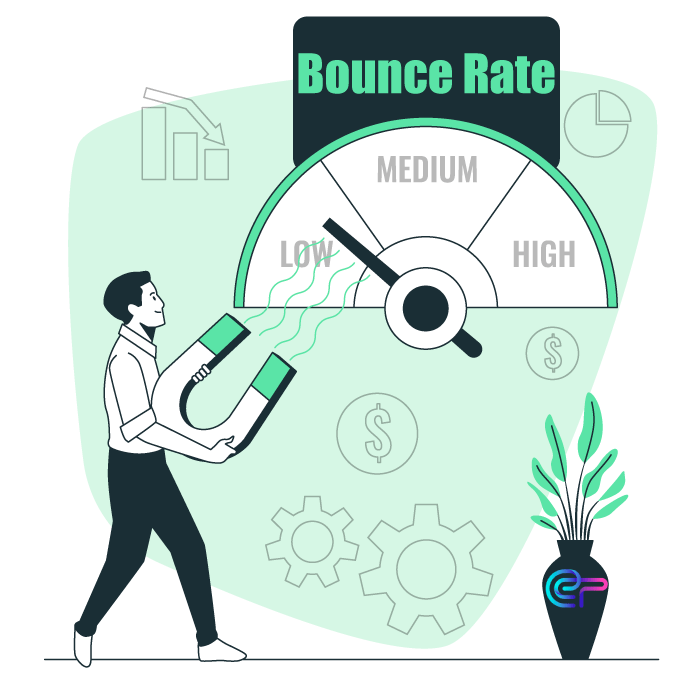
1. Enhance Content Relevance:
– Keyword Research: Comprehensive keyword research helps you understand what your target audience is searching for. Use tools like Google’s Keyword Planner or SEMrush to identify relevant keywords.
– Enticing Meta Descriptions: A well-crafted meta description sets clear expectations for what users will find on your page. Make it engaging, concise, and directly related to the content.
– Quality Content: Content is king. Ensure your content is well-researched, informative, and engaging. Address user queries effectively and keep the content up to date.
2. Mobile Optimization
– Responsive Design: Invest in responsive web design to ensure that your site adapts to various screen sizes and devices.
– Accelerated Mobile Pages (AMP): Implement AMP to create lightning-fast, mobile-optimized versions of your web pages.
– Mobile Speed Testing: Regularly test your site’s loading speed on mobile devices using tools like Google PageSpeed Insights. Optimize images and scripts to improve performance.
3. Site Loading Speed
– Image Optimization: Compress and optimize images to reduce file sizes without compromising quality.
– Browser Caching: Implement browser caching to store frequently used resources in a user’s browser, reducing load times.
– Content Delivery Network (CDN): CDNs distribute your website’s content across multiple servers, improving load times for users globally.
4. Readability and Accessibility
– Font Selection: Choose readable fonts and font sizes. Use web-safe fonts that display consistently across devices.
– Clear Headings and Subheadings: Organize content with clear headings and subheadings, making it easier for users to navigate.
– Mobile-Friendly Design: Test your site on various mobile devices to ensure it’s user-friendly and functional.
5. SEO Best Practices
– Keyword Optimization: Integrate target keywords naturally within your content, titles, and meta descriptions.
– Optimized Meta Tags: Craft compelling meta titles and descriptions that encourage users to click through.
– Structured Data: Implement structured data markup (schema) to enhance search results and provide more information to users.
6. Page Loading Speed and Site Health
– Regular Audits: Periodically conduct site audits to identify and rectify technical issues that affect load times.
– Content Delivery: Use Content Delivery Networks to ensure fast content delivery across the globe.
– Mobile-Friendly Testing: Google’s Mobile-Friendly Test tool helps you identify and address mobile responsiveness issues.
7. Minimize Crowded Pages
– Content Prioritization: Focus on relevant content and eliminate distractions, such as excessive ads or pop-ups.
– Whitespace: Ensure a proper balance of whitespace in your design to make your content visually appealing and easy to digest.
8. Engaging First Content
– Compelling Headlines: Craft engaging and descriptive headlines to pique user interest.
– Clear Value Proposition: Communicate the value your content offers within the first few sentences.
– Visual Appeal: Incorporate eye-catching visuals and multimedia elements to capture users’ attention.
You must first understand user behavior

1. User Intent:
– Users arrive at your site with specific intentions. It might be to find information, purchase, or be entertained. Understanding the intent behind various search queries and optimizing your pages to align with those intents is crucial.
2. Relevance:
– The relevance of your content to the user’s query is paramount. If your content directly addresses what the user is looking for, they are likelier to engage with it and explore your site further.
3. Content Structure:
– Users typically skim through content before deciding whether to stay or leave. A well-structured page with clear headings, subheadings, bullet points, and concise paragraphs makes it easier for users to find what they need.
4. User Experience (UX):
– The user experience encompasses the overall feel of your website. Factors such as page load times, site navigation, mobile responsiveness, and the absence of intrusive pop-ups all contribute to a positive UX.
5. Click-Through Rate (CTR):
– A high click-through rate from search engine result pages (SERPs) is a positive signal. It indicates that users find your meta titles and descriptions compelling and that they expect to find relevant information on your site.
6. Session Duration:
– Monitoring the time users spend on your site is essential. Longer sessions indicate that users are engaging with your content. Short sessions could imply a mismatch between user intent and the content provided.
7. Navigation Path:
– Analyzing the paths users take through your site can help you identify popular content and pages that need improvement. It’s also valuable in designing internal linking strategies.
8. User Interaction:
– Encourage user interaction through comments, social sharing, and interactive elements. Engaging content can extend user sessions and lower bounce rates.
By comprehending these aspects of user behavior, you can tailor your content, design, and user experience to meet user expectations effectively. This not only reduces bounce rates but also enhances user engagement, driving better SEO performance and user satisfaction.
Google's Mobile-First Index
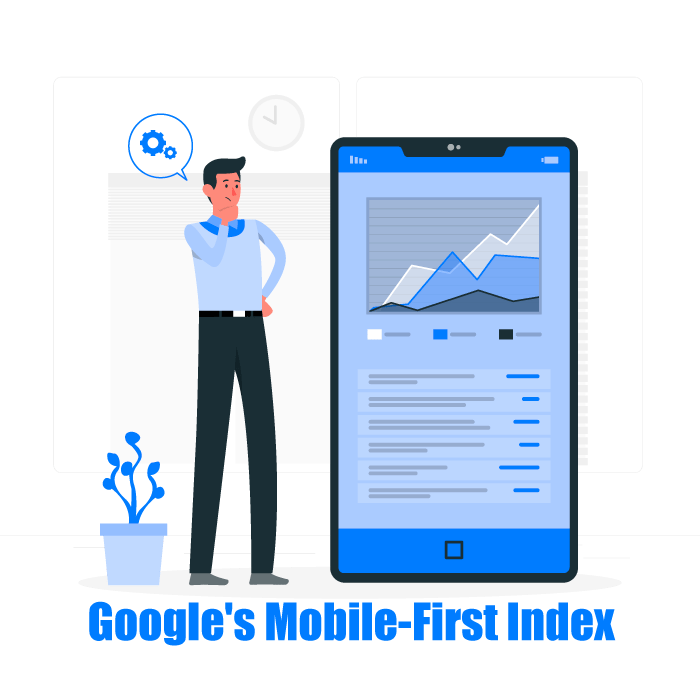
1.Responsiveness of the Site
A responsive website design ensures that your site adapts seamlessly to various screen sizes, whether it’s a smartphone, tablet, or desktop. This means that users on any device can access your content without issues.
2. Site Loading Speed on Mobile
Mobile users are often on the go and expect quick access to information. Slow-loading pages frustrate users and can lead to high bounce rates. Optimize images and minimize unnecessary scripts to ensure fast load times.
3. Intuitive Navigation
Mobile users need straightforward and intuitive navigation. Consider a mobile menu that simplifies access to various sections of your site. Ensure that links and buttons are well-spaced and easily tappable.
4. Clean and Readable Layout
Mobile screens are smaller, so it’s essential to have a clean and readable layout. Use legible fonts, maintain proper text size, and keep paragraphs concise. Content should adapt to the screen size for easy reading.
5. Limited Pop-Ups and Intrusive Ads
Pop-ups and intrusive ads can disrupt the user experience on mobile devices. Use them sparingly, and ensure they can be easily closed by users.
6. Compatibility with Mobile Browsers
Test your website across various mobile browsers to ensure compatibility. What looks great on one may not work well on another, and you don’t want to lose visitors due to browser issues.
7. Load More, Infinite Scroll, or Pagination
Depending on your content, consider the most user-friendly way to display it on mobile. Load more buttons, infinite scroll, or pagination can make navigating your site a breeze.
8. Optimized Forms
If your site includes forms for sign-ups, purchases, or inquiries, ensure they are mobile-optimized. Keep input fields and buttons large enough for touch input, and minimize the need for extensive typing.
By addressing these mobile-friendly considerations, you can create an enjoyable experience for users on small screens. When users can access your site easily and navigate it comfortably, the chances of them staying longer and engaging with your content increase, ultimately contributing to lower bounce rates.
Page Speed: Loading Time's Impact on Bounce Rate
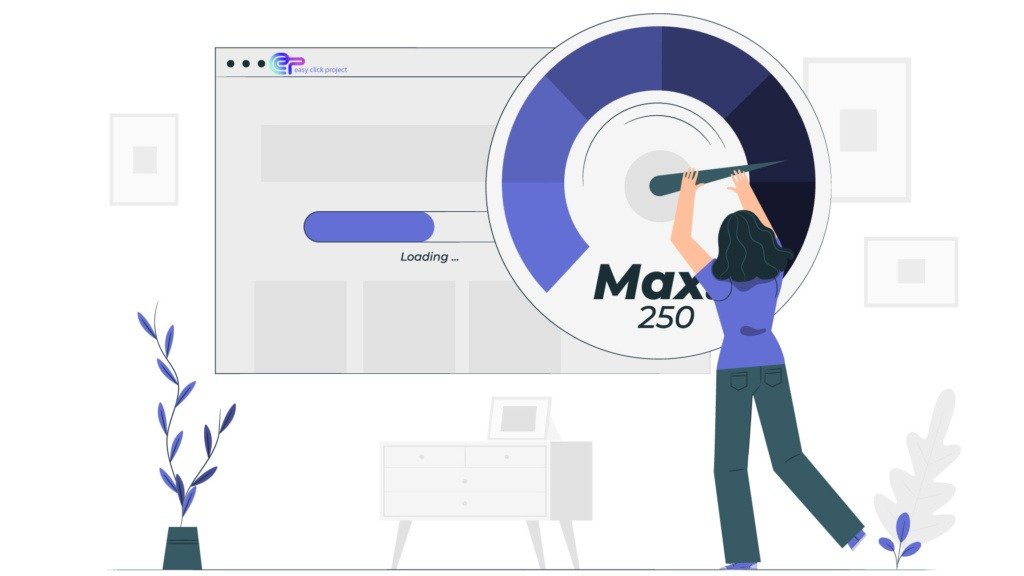
Page speed is the time it takes for your web pages to load in a user’s browser fully. A slow-loading website can have a detrimental effect on user experience and subsequently impact your bounce rate. Here’s how:
1. User Impatience: In today’s fast-paced digital world, users have little patience for slow-loading websites. If a page takes too long to load, visitors are likelier to abandon it, leading to a high bounce rate.
2. Mobile Users: With the proliferation of mobile devices, mobile users expect websites to load quickly. Slow loading on mobile devices can be particularly frustrating, resulting in a higher likelihood of users bouncing.
3. Search Engines: Search engines, including Google, consider page speed a ranking factor. A slow website can adversely affect your SEO and lower search engine rankings.
4. Bounce Rate Impact: High bounce rates often correlate with slow-loading pages. Users are less likely to explore a site further if the initial page loads slowly, leading to a single-page visit.
5. Negative User Experience: Slow-loading pages can contribute to a negative user experience, which, in turn, can damage your brand’s reputation and customer satisfaction.
The Need for Speed
To improve your site’s bounce rate and overall user experience, it’s essential to optimize page speed. Here are some strategies:
Optimize Images: Compress and optimize images to reduce their file size and speed up page loading.
Minimize HTTP Requests: Reduce the number of requests your website makes to the server by eliminating unnecessary scripts and styles.
Use Browser Caching: Leverage browser caching to store static resources, allowing faster loading for return visitors.
Content Delivery Networks (CDNs): Utilize CDNs to distribute website content across multiple servers, reducing load times for users in different locations.
Minimize Redirects: Avoid unnecessary redirects, as they add extra loading time to your pages.
Mobile Optimization: Ensure your website is mobile-friendly and loads quickly on all devices.
Regular Monitoring: Regularly check your site’s loading speed and improve as needed.
Readability and Engagement: Content Quality Matters
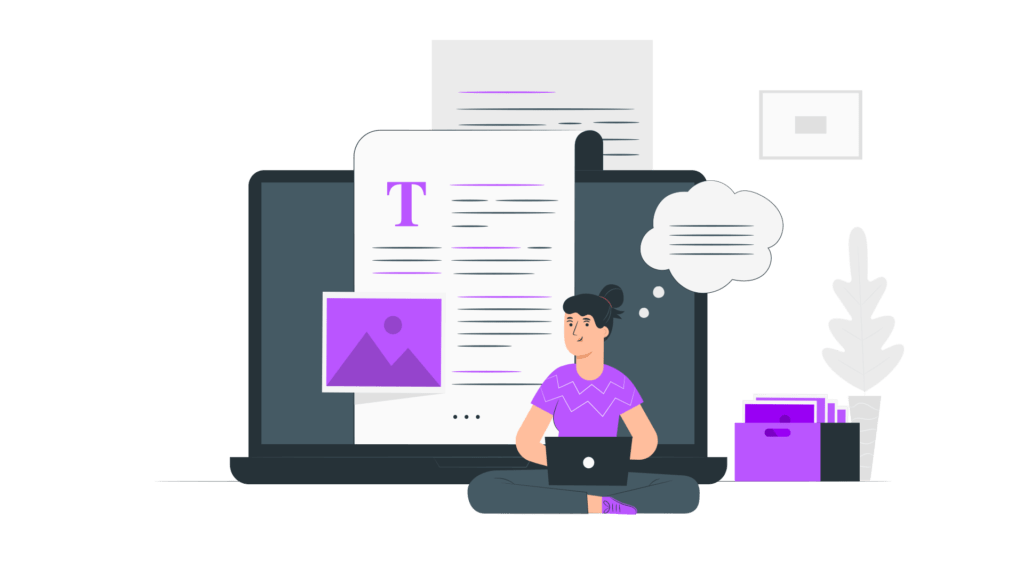
The quality of your website’s content plays a significant role in reducing bounce rates. Here’s why content quality matters:
1. Relevance: Visitors expect content that is relevant to their queries. If your content aligns with their search intent, they will likely stay and explore further. Irrelevant or poorly written content can lead to high bounce rates.
2. Clarity: Content that is well-structured, easy to read, and free from grammatical errors tends to engage users. If visitors find it difficult to understand or are confronted with a wall of text, they may quickly exit the page.
3. Information Value: High-quality content provides valuable information, answers questions, and addresses users’ needs. When users find the information they seek, they are more likely to engage with your site, reducing the bounce rate.
4. Visual Appeal: Content should be visually appealing with images, videos, and a clean layout. A visually unattractive page can discourage users from staying and exploring.
5. Trustworthiness: High-quality, well-sourced content establishes trust with your audience. Trust is a crucial factor that encourages users to stay and navigate your site.
6. Dwell Time: Content that keeps users on your site for longer periods can lead to lower bounce rates. Engaging content that encourages users to click through to other pages is a valuable asset.
7. Mobile Optimization: Ensuring your content displays correctly on mobile devices is essential. Poor mobile optimization can lead to high bounce rates, especially among mobile users.
In summary, content quality directly affects user engagement and, consequently, bounce rates. By providing relevant, well-structured, and informative content that meets users’ expectations, you can significantly reduce bounce rates and enhance the overall user experience on your website. Content quality is not only essential for keeping visitors on your site but also for improving your site’s search engine rankings and online reputation.
Cluttered webpages can significantly contribute to higher bounce rates

Overwhelming User Experience
When a webpage is cluttered with excessive content, images, or ads, it overwhelms visitors. Users might find it challenging to focus on the primary content or navigate the site. This overload can create a sense of chaos and frustration, prompting users to leave the page hastily.
Poor Readability
Cluttered pages often suffer from poor readability. Text may be too small or crowded, making it difficult for users to consume the content. Visitors prefer clean and well-organized layouts that provide a pleasant reading experience.
Slow Loading Times
A cluttered webpage may contain numerous images, scripts, or other elements that slow down the page’s loading speed. Slow-loading pages irritate users and result in a higher bounce rate, as people are less likely to wait for a page to load.
Navigation Challenges
When a webpage is cluttered, it can make navigation confusing. Users may struggle to find the information they’re looking for or the navigation menu. This can be frustrating and discourage users from exploring further.
Aesthetic Appeal
Visual appeal is a critical factor in retaining users. Cluttered pages lack visual appeal and often seem unprofessional. Users are more likely to bounce from pages that appear disorganized or messy.
Distractions
Excessive elements on a page, such as too many ads or pop-ups, can be distracting. Users may become annoyed by these distractions and decide to leave the page rather than dealing with them.
Lack of Focus
Cluttered pages may lack a clear focal point or call to action. Without a clear direction, users might not understand what the page’s purpose is, leading to disengagement and a higher likelihood of bouncing.
To reduce bounce rates caused by cluttered webpages, it’s essential to prioritize clean, user-friendly designs that emphasize readability, clear navigation, and a well-organized layout. This helps users easily access the information they seek, resulting in a more positive user experience and lower bounce rates.
In summary, bounce rate is a multifaceted metric in the realm of SEO. While its direct impact on search engine rankings is largely a myth, it plays a vital role in assessing user engagement and website performance. By delving into the complexities of bounce rate, we’ve revealed its various facets, including how user behavior, mobile-friendliness, site health, and page loading times are key influencers. Moreover, the quality of content, coupled with clutter-free page designs, is integral in keeping visitors engaged and reducing bounce rates. Although bounce rate is important, it’s just one aspect of a more comprehensive SEO strategy that should prioritize user-centric experiences and meaningful content.


















